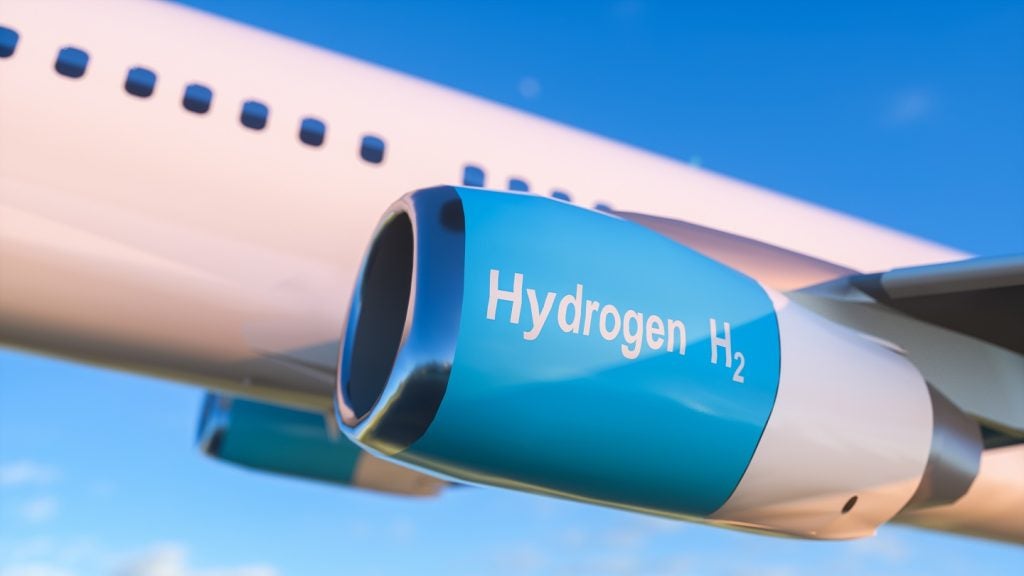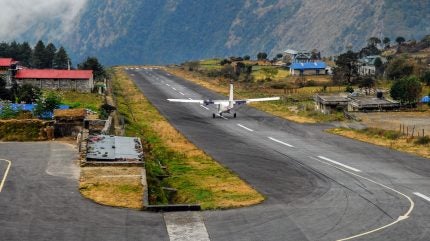
High-altitude airports can offer a key transport link to remote communities in elevated locations, typically at altitudes exceeding 2,000m (6,500 feet) above sea level. These airports pose unique challenges for aviation operations due to the reduced air density and lower oxygen levels, as well as other environmental factors associated with higher elevations.
At higher altitudes, the air density is much lower than compared to sea level. This affects aircraft performance, as there is less lift generated by the wings and less thrust from the engines. Pilots must carefully calculate takeoff and landing distances, as well as climb rates, to ensure safe operations. Aircraft engines may experience reduced performance at higher altitudes due to the lower air density.
High-altitude airports often have longer runways to accommodate the increased takeoff and landing distances required in lower air density. The runway gradient, or slope, is also a critical factor, as uphill takeoffs and downhill landings can affect aircraft performance.
Weather conditions at high altitudes can be unpredictable, with rapid changes in temperature, wind patterns, and visibility. Pilots must be prepared for weather variations and have contingency plans for adverse conditions. Weather conditions at high altitudes can also be unpredictable at these altitudes, with rapid changes in temperature, wind patterns, and visibility.
Some well-known high-altitude airports include La Paz El Alto International Airport in Bolivia, located at over 4,000m (13,000 feet) above sea level, and Quito Mariscal Sucre International Airport in Ecuador, situated at approximately 2,800m (9,200 feet) above sea level.
While historically the highest airports have been located in the heady regions of South America, the construction boom in Asia over the last couple of decades led to a noticeable shift in the locations of the record holders. So, what are the ten highest civilian airports in the world, by altitude above sea level?

10. Yushu Batang Airport (YUS), China: 3,890m
Yushu Batang Airport, situated at an elevation of 3,890m, is located 18km south of Gyegu (Jyekundo) town and serves Yushu City in Qinghai Province in Northwest China.
How well do you really know your competitors?
Access the most comprehensive Company Profiles on the market, powered by GlobalData. Save hours of research. Gain competitive edge.

Thank you!
Your download email will arrive shortly
Not ready to buy yet? Download a free sample
We are confident about the unique quality of our Company Profiles. However, we want you to make the most beneficial decision for your business, so we offer a free sample that you can download by submitting the below form
By GlobalDataConstruction of the airport started in 2007 and services were launched in May 2009. The air link has cut the travel time between Jiegu town of Yushu and Qinghai’s capital of Xining to just 70 minutes, which otherwise takes 15 hours.
The airport served 7,484 passengers during the first year of its operation, and its capacity ramped up to 374,561 passengers in 2021. The 3,800m (12,467 feet) long runway at the airport is big enough to accommodate A319 aircraft, with the airport operating 4,584 aircraft movements in 2021.
The airport connects Yushu to Beijing, Chengdu, Xi’an, and Xining through routes operated by Beijing Capital Airlines, China Eastern Airlines, and Tibet Airlines.
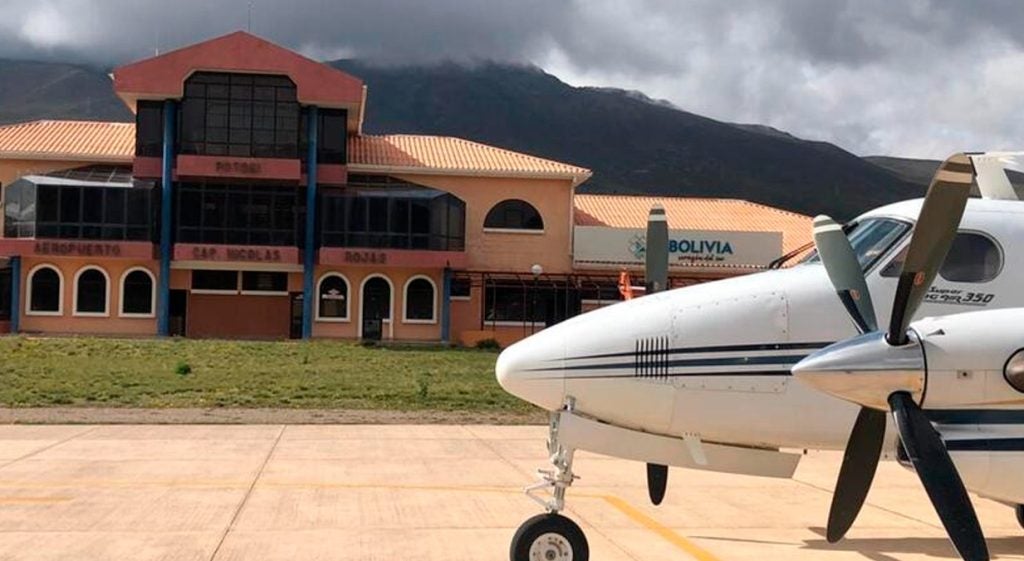
9. Captain Nicolas Rojas Airport (POI), Bolivia: 3,936m
Capitán Nicolas Rojas Airport, or Aeropuerto Capitán Nicolas Rojas in Spanish, is a small high-elevation airport serving the city of Potosí, the capital of the Potosí Department in southwestern Bolivia.
The 2,833m (9,295 feet) asphalt runway is in a shallow valley 4km (2.5 miles) northeast of the Potosí. The airport, situated 3,939m (12,922 feet) above sea level, is surrounded by mountainous terrain.
Boliviana de Aviación, the Bolivian flag carrier, operates domestic routes in and out of Captain Nicolas Rojas Airport to Cochabamba, La Paz, and Santa Cruz de la Sierra.
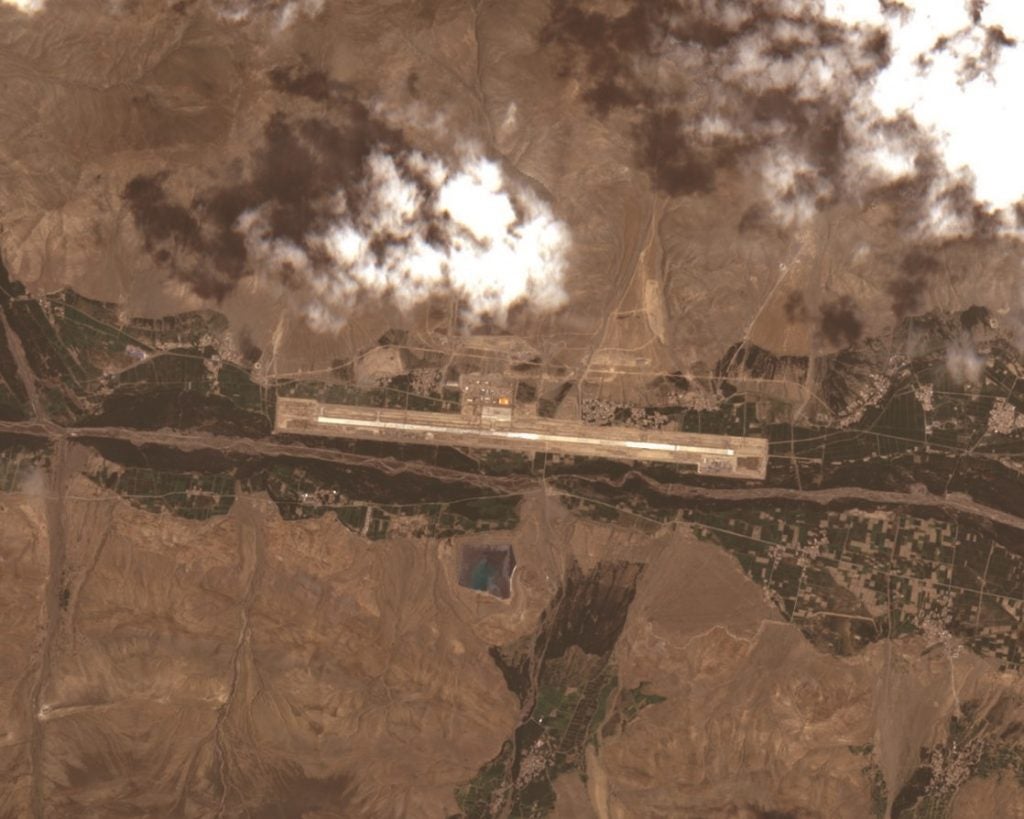
8. Shannan Longzi Airport (LGZ), China: 3,980m
Shannan Longzi Airport is a dual-use military and civilian airport in Shannan, located 11km (6.8 miles) from Shannan City in the Tibet Autonomous Region. The airport, which is 45km (28 miles) from the disputed China-India border at Arunachal Pradesh, welcomed its first commercial flight in January 2023.
The airport, located 3,980 metres (13,060 feet) above sea level, features a 4,500m (14,800 feet) long runway and according to local authorities, it will have the capacity to handle 180,000 passengers per year by 2030.
Shannan Airport was first proposed in conjunction with the development of Ali Pulan Airport and Rikaze Dingri Airport, with the site being approved in 2019. Construction on the airport commenced in April 2021, and the project was one of the most expensive to break ground that year. The project included the construction of a terminal building with a floor area of 6,000m2, the 4,500m runway, hangars, taxiways, and an aircraft maintenance centre.
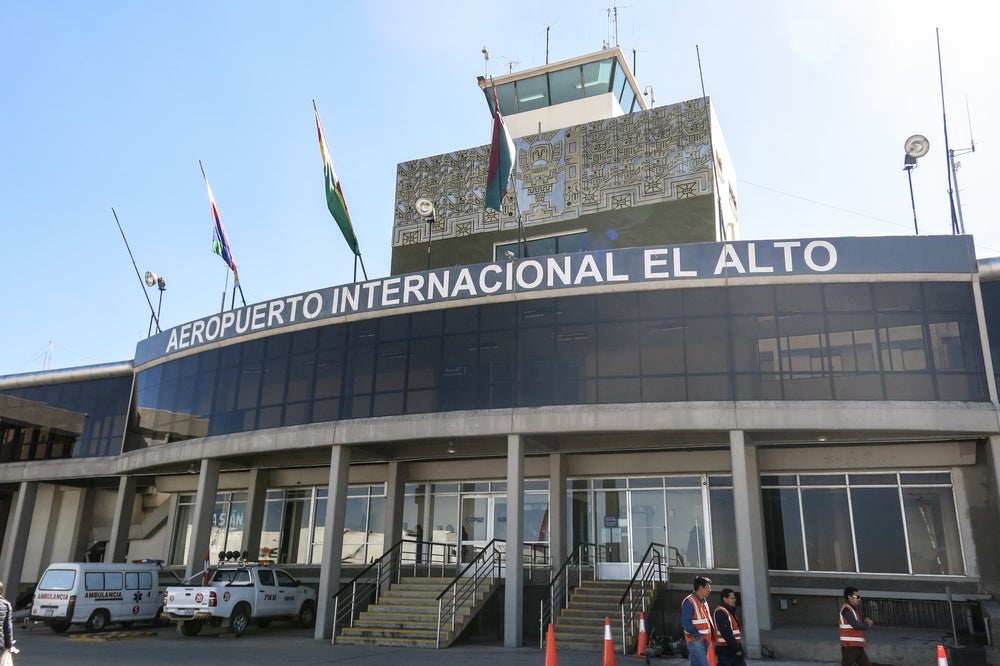
7. El Alto International Airport (LPB), Bolivia: 4,062m
El Alto International Airport (Aeropuerto Internacional El Alto in Spanish; formerly John F. Kennedy Airport), is the seventh highest-altitude commercial airport in the world, and the highest Airport in South America. It is located in the city of El Alto, 14km southwest of La Paz City, Bolivia.
The airport, which does hold the record as the highest International airport in the world, is situated at an elevation of 4,062m above sea level. Because of the thin air at such a high altitude, most commercial wide-body aircraft cannot operate at full load out of El Alto International Airport. The existing airport was inaugurated in 1965, and underwent expansion in the 1970s and again in 2006.
El Alto has two runways, one paved measuring 4,000m (13,123 feet) and one unpaved 2,050m (6,725 feet), and one terminal. Passenger facilities at the terminal include a bank, bars, restaurants, and duty-free shops. The airport is a hub for Amas Bolivia, a regional airline that operates short-haul flights in the region.
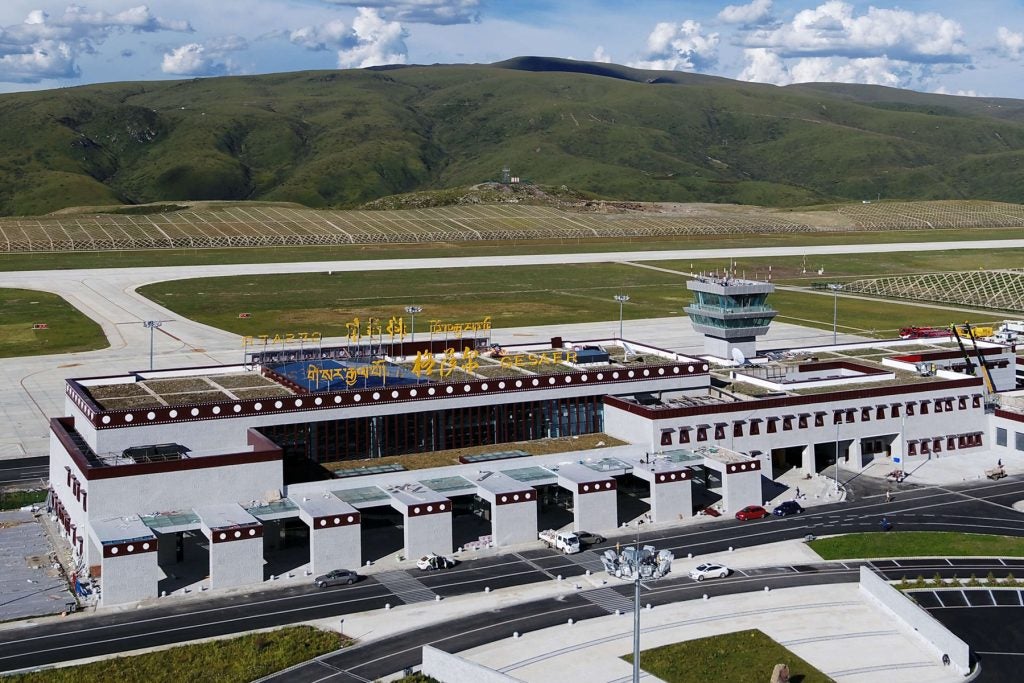
6. Ganzi Gesaer Airport (GZG), China: 4,068m
Ganzi Gesaer Airport, also known as Garzê Gesar Airport, is located 52km (32 miles) from Garzê Town in the Garzê Tibetan Autonomous Prefecture, in Sichuan, Southwest China. The airport, named after King Gesar described in an Epic of the same name, opened in 2019 after 4 years of construction, in a project that required a CNY2.26bn ($320m) investment.
Ganzi Gesaer’s 4,000m (13,123 feet) runway lies at an elevation of 4,068 metres (13,346 feet) and was the fifth civil airport to be built at an altitude over 4,000m above sea level in China.
The airport handled 80,788 passengers in 2021, with 1,718 aircraft movements – but is designed to handle up to 150,000 passengers per year. It connects the Garzê region to Chengdu, with routes operated by Sichuan Airlines.
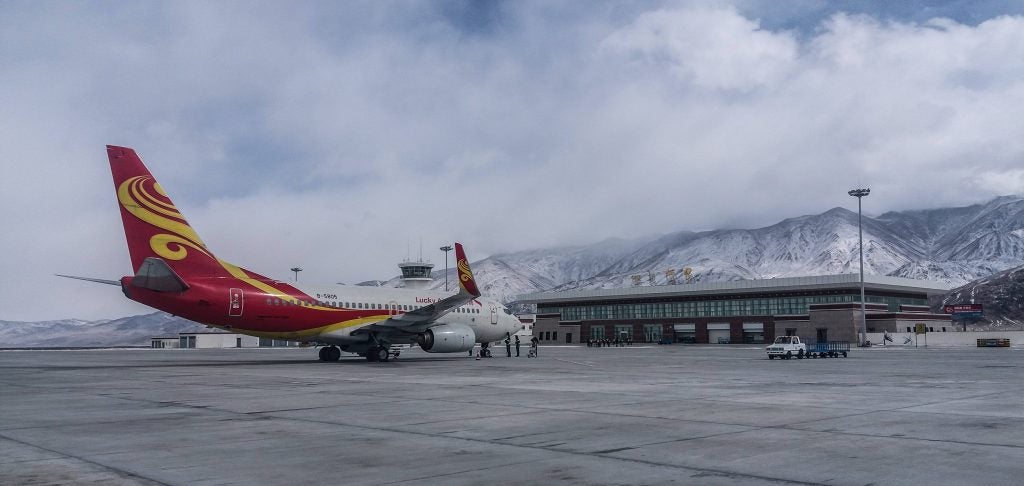
5. Ali Kunsha Airport (NGQ), China: 4,274m
Ali Kunsha Airport, also known as Ngari Gunsa Airport or Shiquanhe Airport, is a dual-purpose military and civil airport that serves the city of Shiquanhe in Ngari Prefecture, southwest of China’s Tibet Autonomous Region, near the Indian border.
Ali Kunsha, which opened in 2010, is situated at an elevation of 4,274m (14,022 feet). It handled 190,056 passengers in 2021 with 2,535 aircraft movements. It has a 4,500m (14,764) long asphalt runway. Ali Kunsha Airport offers an air connection to two holy sites, Lake Manasarovar and Mount Kailash, offering transport links to Hindu, Buddhist, Bonpa, and Jain pilgrims.
Construction work on the Ali Kunsha Airport commenced in May 2007 and the first commercial flight to the airport was that of an A319 jetliner operated by Air China. The total investment in the airport’s development was CNY1.65bn ($241.22m).
Ngari Gunsa Airport connects Shiquanhe with Kashgar, Xi’an, Ürümqi, Hotan, Lhasa, Shache, and Shache through routes operated by China Eastern Airlines, Lucky Air and Tibetan Airlines.

4. Ganzi Kangding Airport (KGT), China: 4,280m
Ganzi Kangding Airport, also known as Garzê Kangting Airport, is located 4,280m above sea level in the Garze Tibetan Autonomous Prefecture, approximately 38km from Kangding, the capital of the Sichuan Province in Southwest China.
Garzê Kangting Airport’s 4,000m (13,123 feet) long runway caters to medium-sized passenger and cargo aircraft, such as the Airbus A319-100 and Boeing 737-700. The airport, opened in 2009, served 25,417 passengers in 2021 with 944 aircraft movements.
Ganzi Kangding Airport cuts down the journey time to Chengdu City by 35 minutes. It was constructed with an investment of CNY1bn ($120m), with Zhongnan Airports Construction Corporation enlisted as the main contractor for the project. Commercial operations were started in October 2008, with the airport connecting Kangding to Chengdu and Chongqing via routes operated by Sichuan Airlines.
In 2016, Two China Eastern pilots had their licences revoked and an assistant captain was suspended from flying after a failed landing at Ganzi Kangding. They attempted to land an Airbus 319 during bad weather; but the aircraft hit the ground outside the runway at speed, almost causing a serious crash. The aircraft rerouted to Chengdu after missing the approach, having taken damage to its landing gear and tail.

3. Rikaze Dingri Airport (DDR), China: 4,300m
Rikaze Dingri Airport, also called Shigatse Tingri Airport, is a high-altitude airport in Tingri County in the Tibet Autonomous Region. It serves its namesake, Shigatse City, the second-largest city in Tibet.
The Shigatse Tingri complex includes the 6,612m2 terminal building, a business complex, station parking and the station road system; as well as other supporting facilities, such as road and parking organisation within the site. According to local authorities, Rikaze Dingri Airport has the capacity to serve up to 250,000 passengers per year and features a 4,500m (14,764 feet) runway.
Rikaze Dingri Airport, located 4,300m (14,108 feet) above sea level, was opened in December 2022 as an alternative to the nearby Rikaze Peace Airport, a converted military base which has been operating as a civilian airport since 2010.
Shigatse Tingri Airport offers a connection between Tingri County – which is bordered on the south by the main range of the Himalayas, including Mount Everest – and Chengdu and Lhasa, with routes operated by Air China.
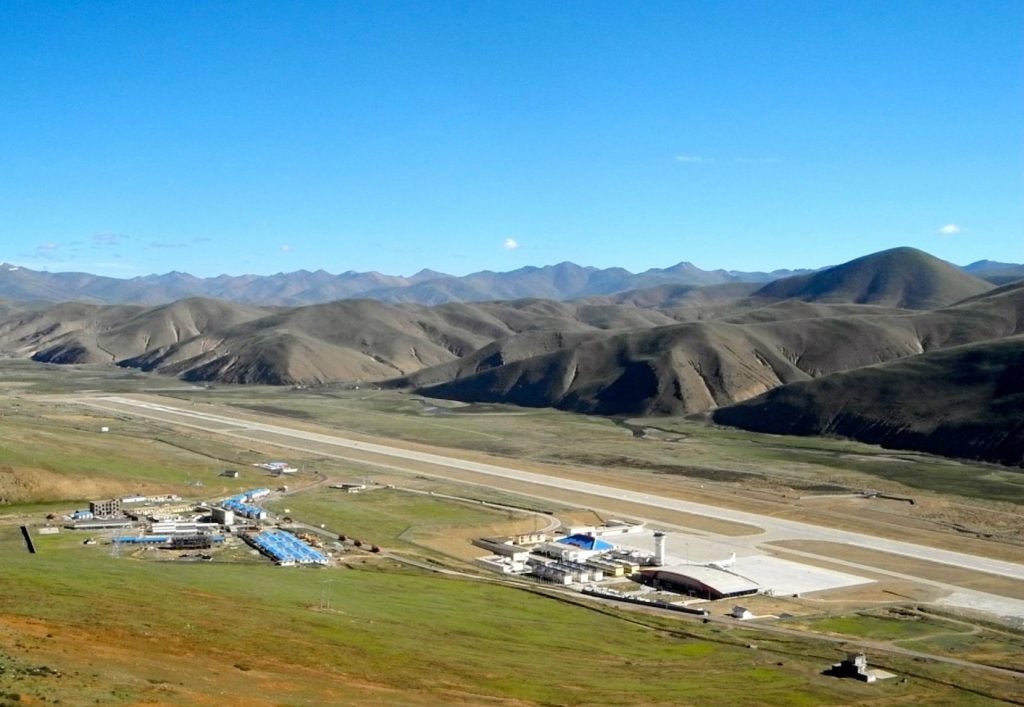
2. Changdu Bangda Airport (BPX), China: 4,334m
Changdu Bangda Airport, also known as Qamdo Bamda Airport, is currently the world’s second-highest-altitude commercial airport, although it previously held the top spot in this list. It is located at an elevation of 4,334m (14,764 feet), serving the town of Qamdo (Changdu) in the Tibet Autonomous Region.
Changdu Bangda is located on a plateau in the Hengduan Mountains, and experiences wind speed exceeding 30m per second in the winter and temperatures as low as -20°C (-4°F) in winter and spring. The oxygen level at the airport is only 50% of that at sea level.
Dubbed ‘the loneliest airport in the world’, Qamdo Bamda also held the record for the world’s longest paved runway, measuring 5,500m long, until a new 4,500m (14,800 feet) runway was built in 2015. Still a mighty length, the length is required to combat the reduced engine and lift performance that affects aircraft at high altitudes.
Changdu Bangda handled 402,165 passengers and 4,754 aircraft movements in 2021, mainly serving routes connecting Qamdoto Chengdu, Chongqing, Lanzhou, Lhasa, and Xi’an via Air China, Tibet Airways and West Air.

1. Daocheng Yading Airport (DCY), China: 4,411m
Daocheng Yading Airport, which opened in September 2013, is the highest-altitude airport in the world at an elevation of 4,411m. The airport serves Doacheng County in the Garzi Tibetan Autonomous Prefecture of Sichuan Province, Southwest China. It is the main connection to the Yading Nature Reserve, 6km away.
Daocheng Yading is comprised of a single runway, which is 4,200m long and 45m wide, and a 5,000m² terminal building. The airport is powered by six patented Resibloc dry-type transformers, rated at 4,688kW, supplied by ABB.
Due to its high altitude, Daocheng Yading requires special operating procedures. Aircraft must take off and land at a slower speed than at lower altitudes, and passengers are advised to acclimatise to the altitude before flying.
Daocheng Yading Airport was constructed with an investment of CNY1.58bn ($255m). The travel time from Daocheng to Chengdu, which formerly required a two-day bus trip, has been reduced to just one hour with the opening of the airport. The airport served 155,474 passengers in 2021 through 2,314 aircraft movements, with main flight routes to Chengdu, Guangzhou, Chongqing, Zhuhai, and Xi’an.






